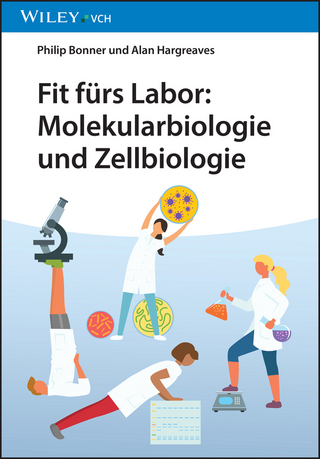
Evolution of Fungi and Fungal-Like Organisms
Springer International Publishing (Verlag)
978-3-031-29201-9 (ISBN)
Sequence analyses of numerous fungal genomes over the past two decades have provided us with extensive insights into the phylogenetic relationships of fungi and the distribution of genes and their inferred functions, across the fungal kingdom. It is now possible to answer questions about the origin of the fungal kingdom and fungal evolution with an analytical precision that was not possible before.
This fully revised and updated 2nd edition of The Mycota, Vol. 14, addresses major aspects of fungal evolution. The book is divided into four sections covering the following main topics:
-Evolutionary roots of fungi
-Evolution of pathogenic strategies
-Evolution of mutualistic interactions
-Evolution of metabolism and development in fungi
Fungi are among the oldest eukaryotic groups in the living world. The aim of this book is to better understand the history and importance of fungi, as well as the characteristics that distinguish them from their sister group, the metazoans, and other fungus-like groups such as the slime molds and oomycetes. Many fungal species are important pathogens of animals and plants and have distinct but parallel pathogenicity strategies. Mutualistic interactions of fungi with other organisms are crucial for their survival in different ecological niches and have a great influence on their evolution and the design of their genomes. Metabolism is one of the most important features of life, and the diversity of metabolic processes is best understood by considering evolution. Studies of fungal metabolism have traditionally focused on metabolites of particular interest, namely mycotoxins, pathogenicity factors, antibiotics, and other compounds with interspecific activity.
This volume will be of great interest to mycologists, evolutionary biologists, and fungal geneticists, as well as to lecturers and students of microbiology and mycology.
Stefanie Pöggeler (born 1963) studied Biology at the Ruhr-Universität in Bochum (Germany). In 1993, she graduated with a thesis on intron-encoded polypeptides in plastids and mitochondria under the supervision of Prof. Ulrich Kück. She later on completed her "Habilitation" at the Ruhr-Universität Bochum in 2000 and was awarded the Venia Legendi in Botany. Between 2001 and 2003 she had a stand-in assistant professorship in Botany at the Wilhelms Universität in Münster (Germany). In 2006 she was appointed as professor for Genetics of Eukaryotic Microorganisms at the Georg-August Universität Göttingen (Germany).
Her work is focused on the analysis of mating type genes and autophagy in sexual development of filamentous ascomycetes. In a second line of research, she is interested in the evolution of fungal inteins.
Part I. Evolutionary Roots of Fungi.- Chapter 1. The Protistan Origins of Animals and Fungi.- Chapter 2. Evolution of Signalling and Morphogenesis in the Dictyostelids.- Chapter 3. The Evolution of Mitochondrial Genomes in Fungi.- Part II. Evolution of Pathogenic Strategies.- Chapter 4. Dimorphism and Pathogenesis in Mucor Species.- Chapter 5. Genome Evolution in Fungal Plant Pathogens: From Populations to Kingdom-Wide Dynamics.- Chapter 6. Host Switching and Geographic Expansions in (Hemi) Biotrophic Plant Pathogens.- Part III. Evolution of Mutualistic Interactions.- Chapter 7. Mycoviruses.- Chapter 8. Bacterial Endosymbionts of Mucoromycota Fungi: Diversity and Function of Their Interactions.- Chapter 9. Fungi and Their Environmental Micropredators.- Chapter 10. Global Fungal Diversity Estimated from High-Throughput Sequencing.- Part IV. Evolution of Metabolism and Development.- Chapter 11. Activation of Secondary Metabolite Production in Fungi.-Chapter 12. Evolution and Diversity of Bioluminescent Fungi.- Chapter 13. Paedomorphosis and Sequestrate Basidiomycete.
"This is essentially a new book in the same broad subject area ... and they have been thoroughly revised and have different authorships. ... I have concentrated here on chapters which I found of particular interest myself ... . The Editors are to be congratulated on putting such a great selection of topics together!" (Hawksworth, IMA Fungus, February 5, 2024)
"The fourth edition has swelled by a rather modest 126 pages, but what really makes it stand out is that many of the photographs of Petri-dish cultures are now in colour-a most useful addition. ... The book will ... remain as a treasured testimony to the work of a most remarkable man who devoted most of his life to improving our understanding of food spoilage issues involving fungi, and particularly the characterization of the species involved." (IMA Fungus, Issue 2, February 5, 2024)
| Erscheinungsdatum | 16.08.2024 |
|---|---|
| Reihe/Serie | The Mycota |
| Zusatzinfo | XIX, 322 p. 56 illus., 33 illus. in color. |
| Verlagsort | Cham |
| Sprache | englisch |
| Maße | 178 x 254 mm |
| Gewicht | 726 g |
| Themenwelt | Naturwissenschaften ► Biologie ► Allgemeines / Lexika |
| Naturwissenschaften ► Biologie ► Evolution | |
| Naturwissenschaften ► Biologie ► Mikrobiologie / Immunologie | |
| Naturwissenschaften ► Biologie ► Mykologie | |
| Schlagworte | Book • fungal ecology • fungal evolution • Fungal Genes • fungal genetics • Fungal Genomes • Fungal Metabolism • fungal pathogenesis • Fungal pathogens • Fungi • Genome Evolution • mutualistic interactions • Mycoviruses |
| ISBN-10 | 3-031-29201-4 / 3031292014 |
| ISBN-13 | 978-3-031-29201-9 / 9783031292019 |
| Zustand | Neuware |
| Informationen gemäß Produktsicherheitsverordnung (GPSR) | |
| Haben Sie eine Frage zum Produkt? |
aus dem Bereich


